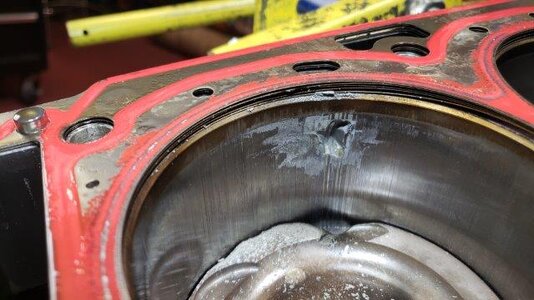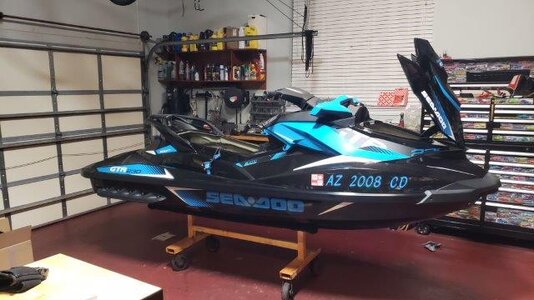I feel your pain! My 2017 GTR (58 hours) melted a piston on cylinder 1 last fall. I rebuilt the engine, new block $1,700.00 big ones, 1 new piston, all new bearings, all new rings, and lets not forget the crazy amount of o-rings and seals. I also replaced the #1 cylinder fuel injector, and the CTS. The cylinder head had to go to the local machine shop because melted parts of the piston damaged the valves and valve seats. Everybody that I discussed the damage with went right to a lean mixture in that cylinder. I took the #1 and #2 cylinder injectors to Pensacola, Fuel Injection for a bench test and flow comparison. They said the #1 injector flow rate was identical to the #2 at 5 different pressures, but suggested it may have been a temporary clog/restriction that cleared out.
The reason I changed the coolant temp sensor is from what I read in the service manual. Sea-Doo engine computers run the engine lean when they are cold so the engine reaches operating temperature faster. So, that made me wonder ... what would happen if the CTS failed in the "Cold" state? In theory, the ECU would continue to lean out the fuel/air mixture because it thinks the engine is still cold. I pulled my CTS, and measured the resistance at different temps, and the numbers were not in line with the service manual. So, I changed it. My first trip to the boat ramp, I connected my CanDoo Pro to the ski and monitored engine temp. It hit 195F.
The owner's manual says you can run 87 octane gas in my ski, but the majority on the forum say you shouldn't'; so I pumped all the gas out of my tank and refilled it with 93 octane ethanol free gas before I fired up the rebuilt engine.


She's back together now and running well. Total cost was about $4K for parts and special tools. The most expensive tool was the jet pump/engine alignment tool.







